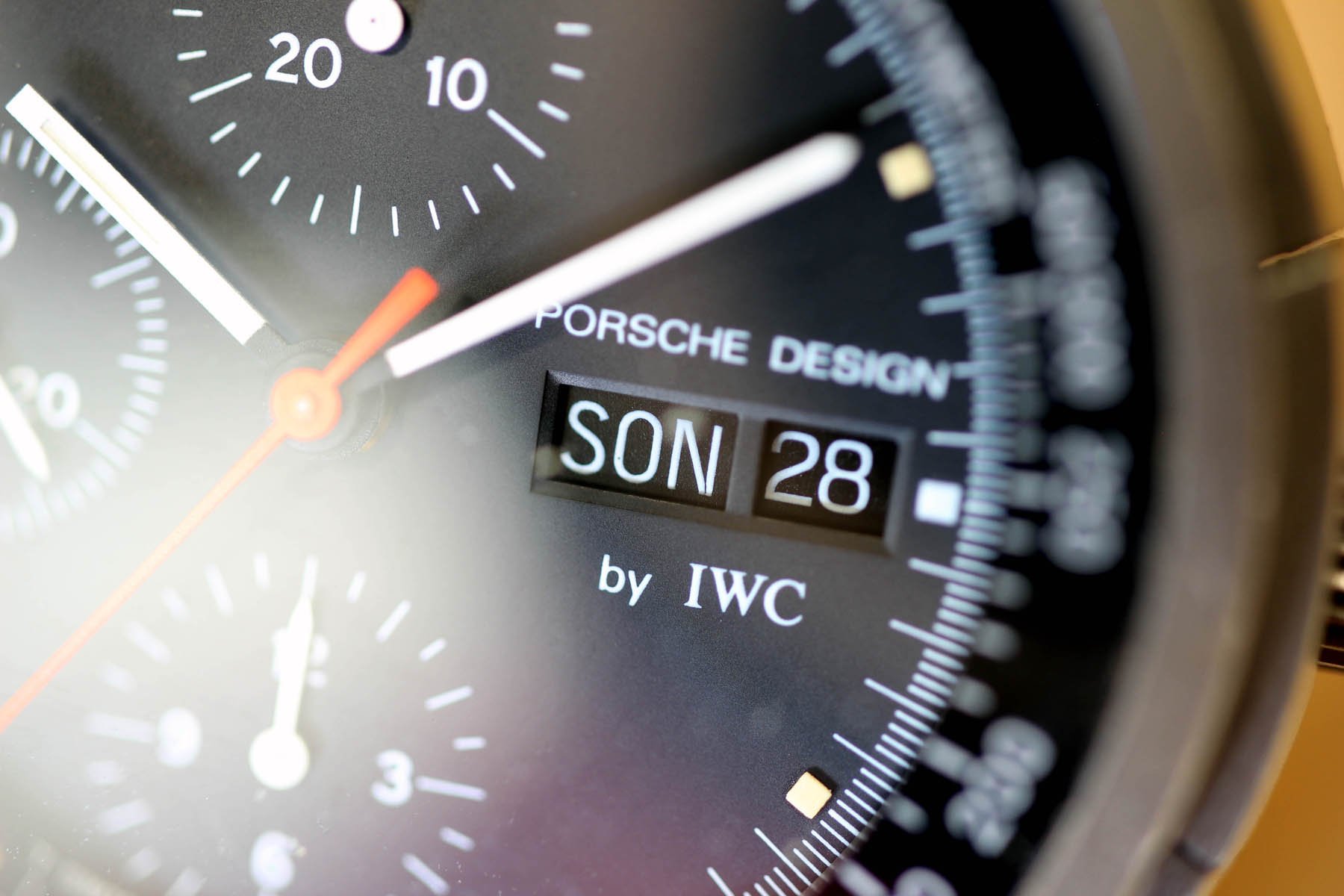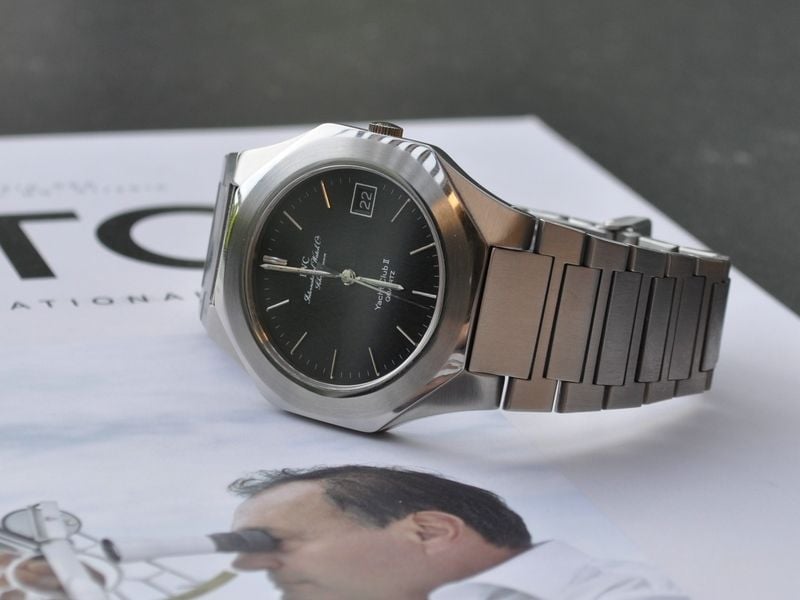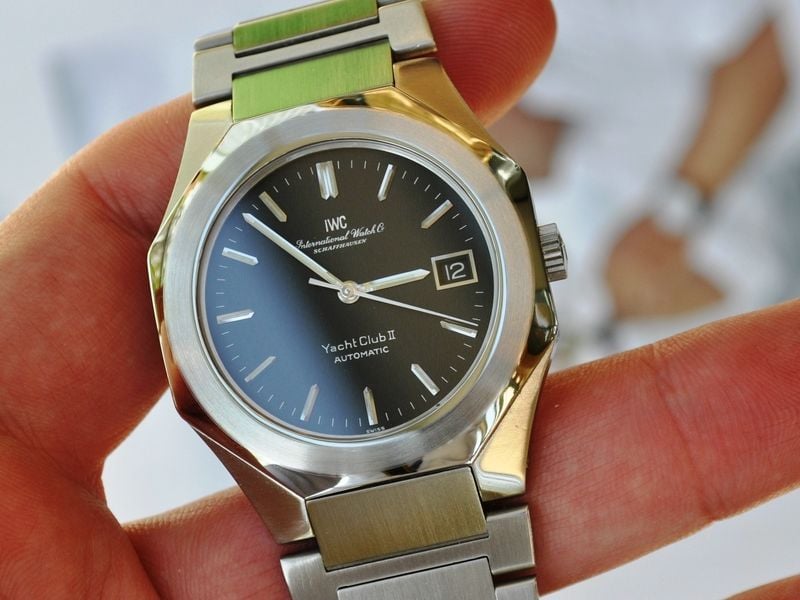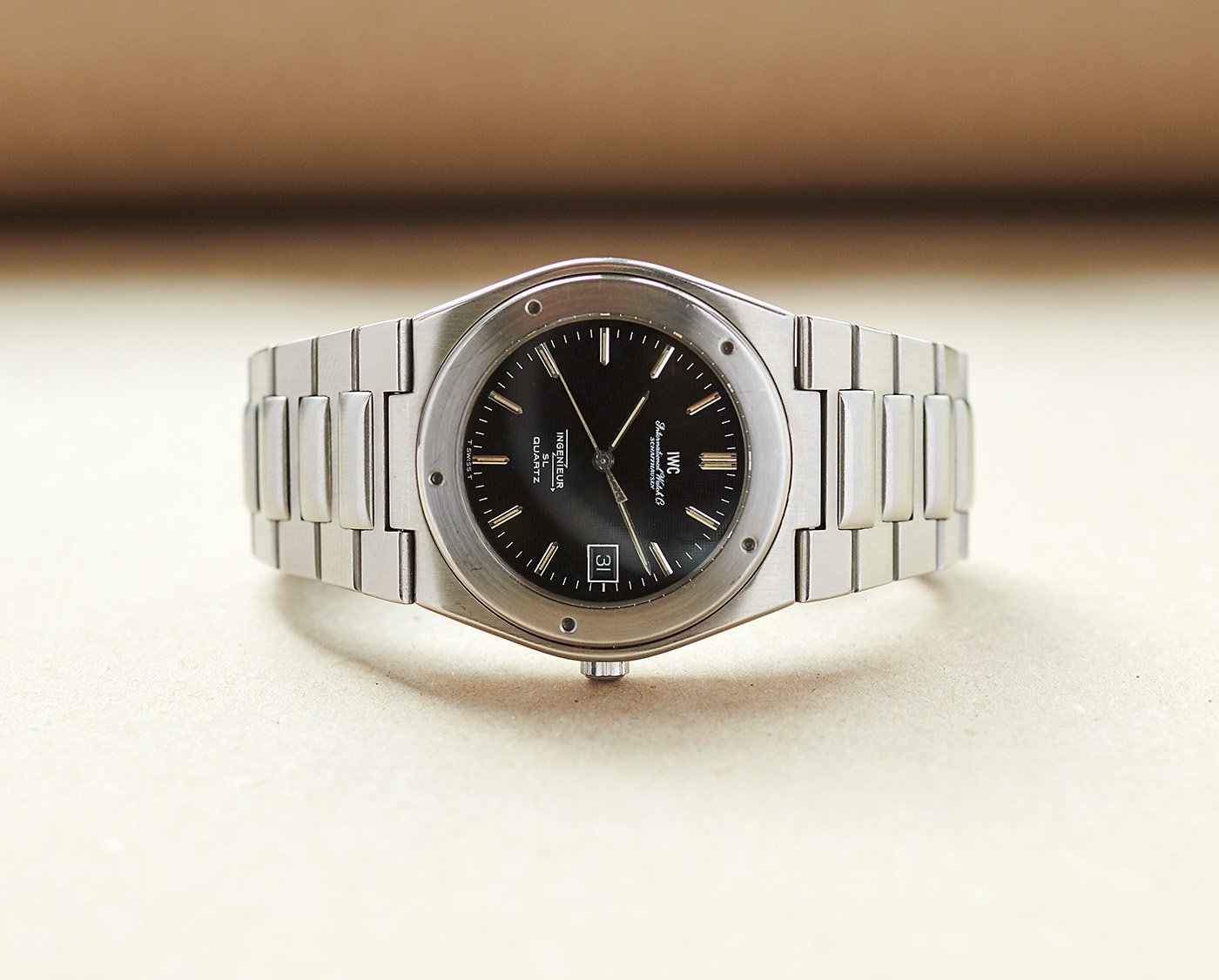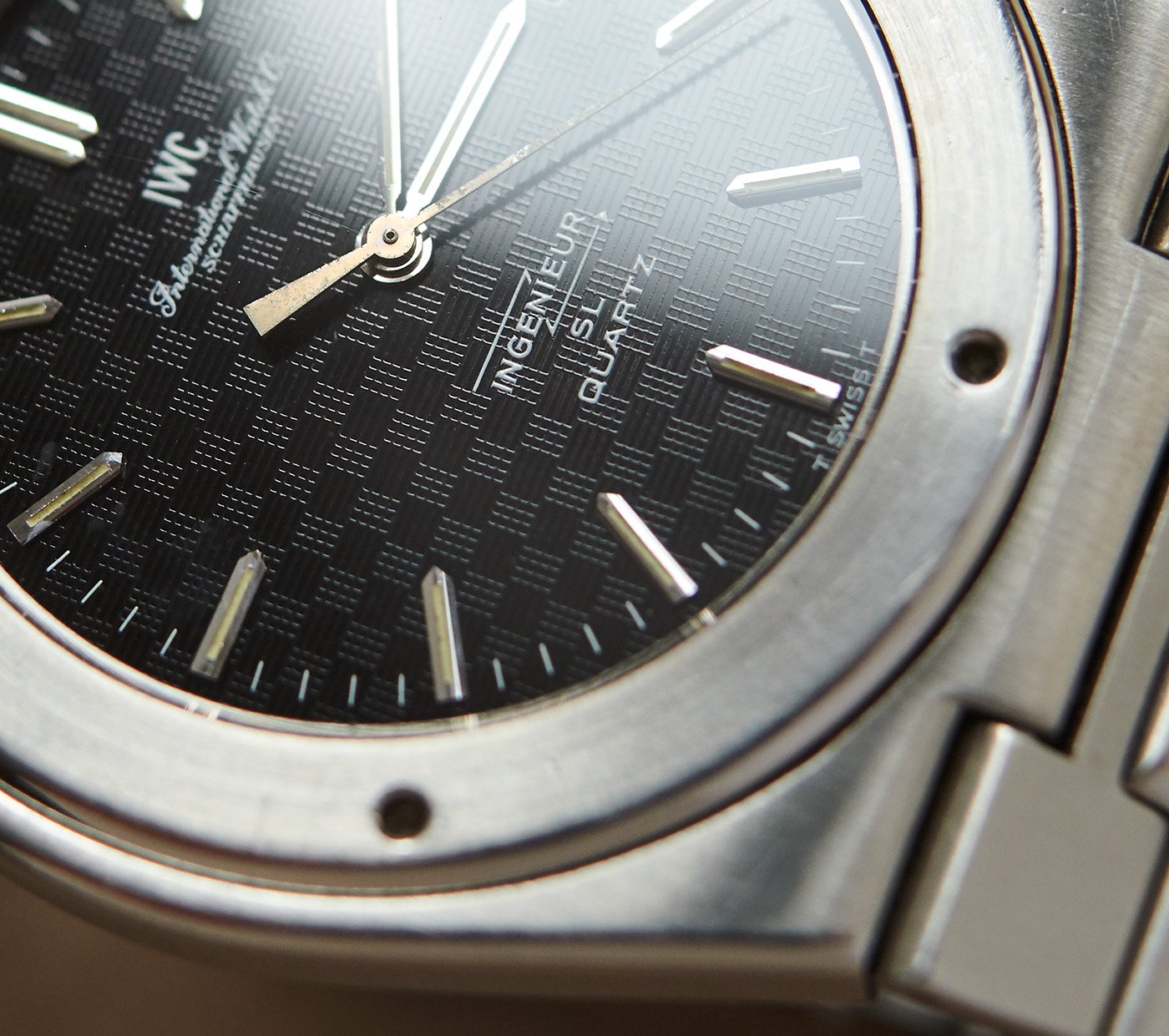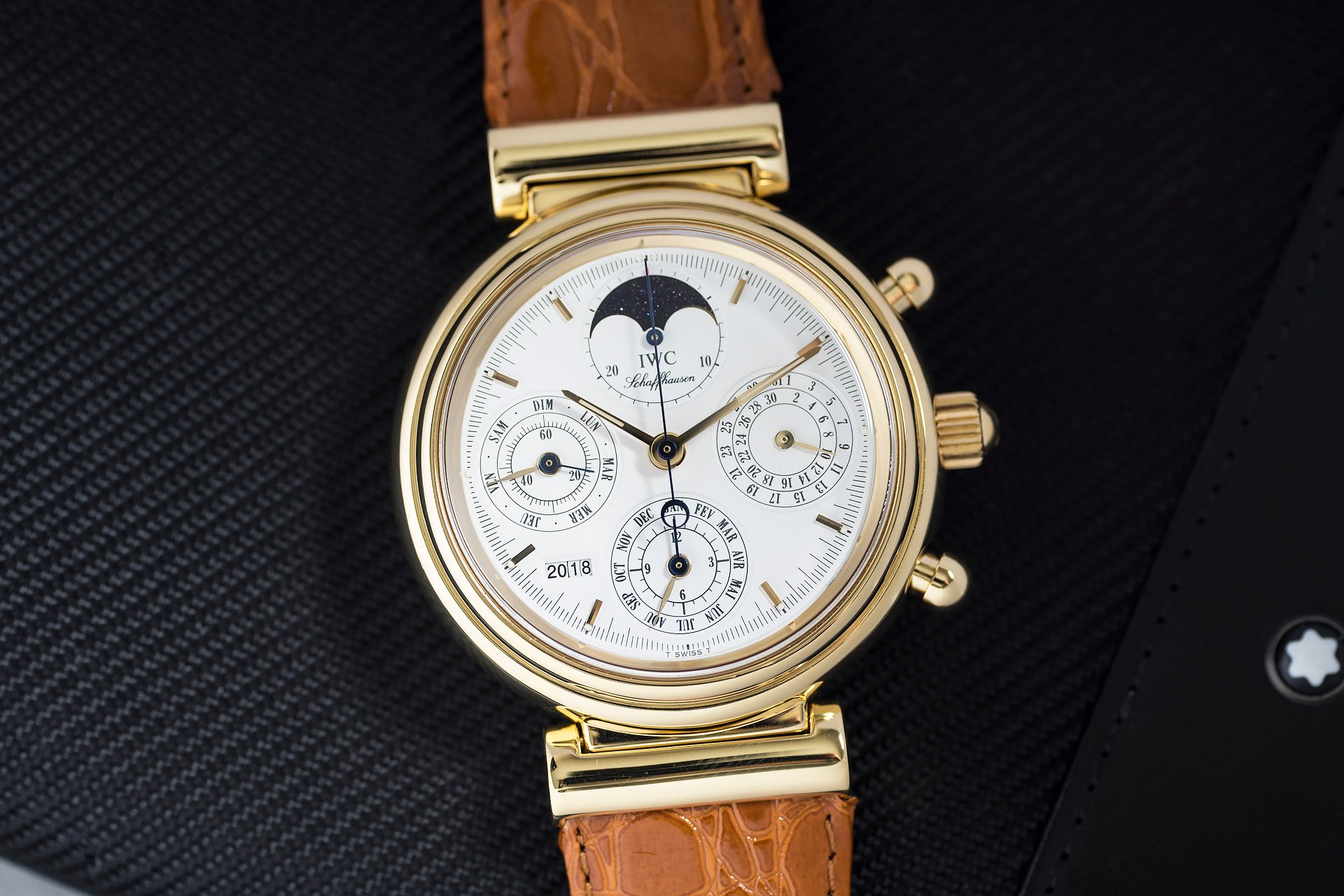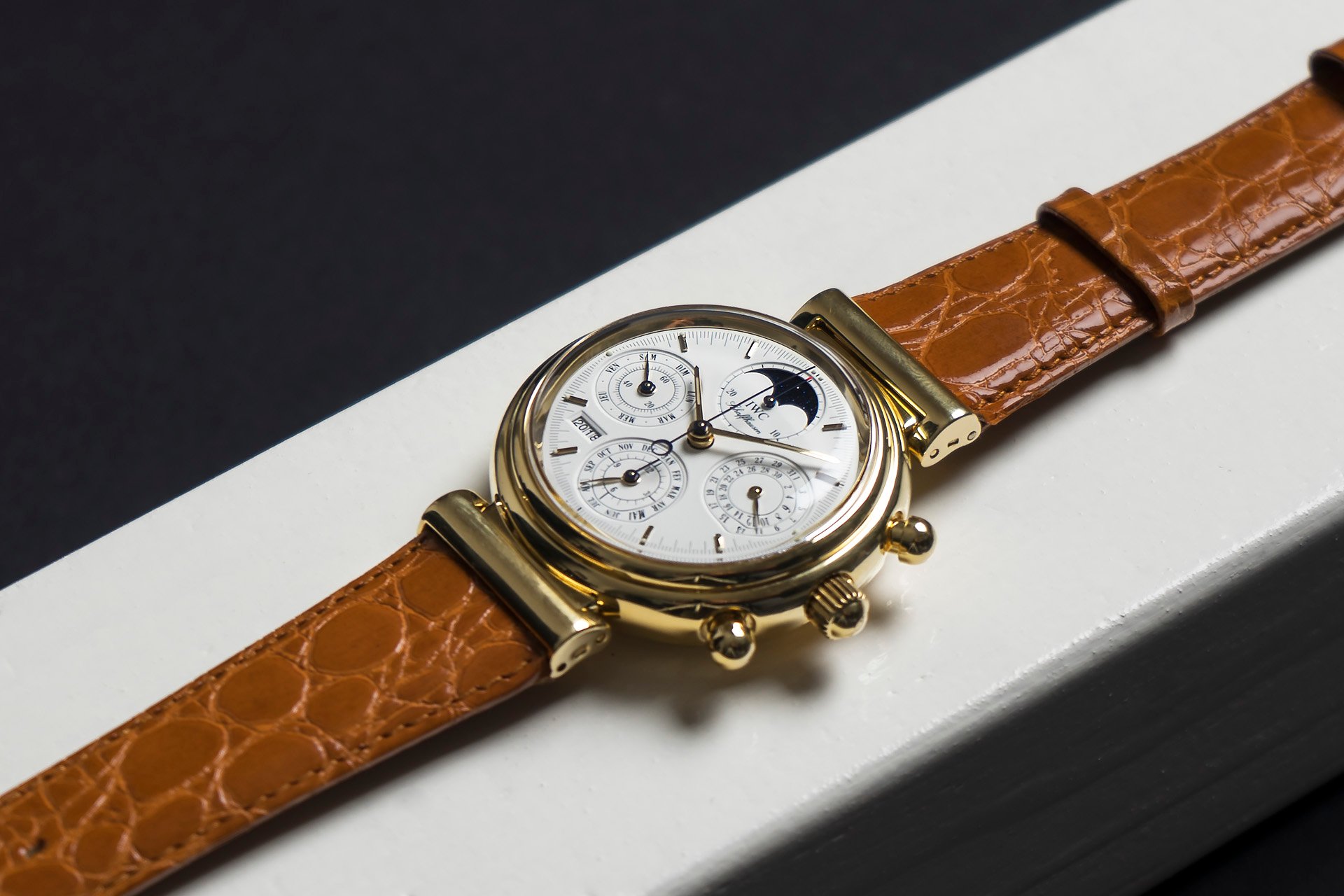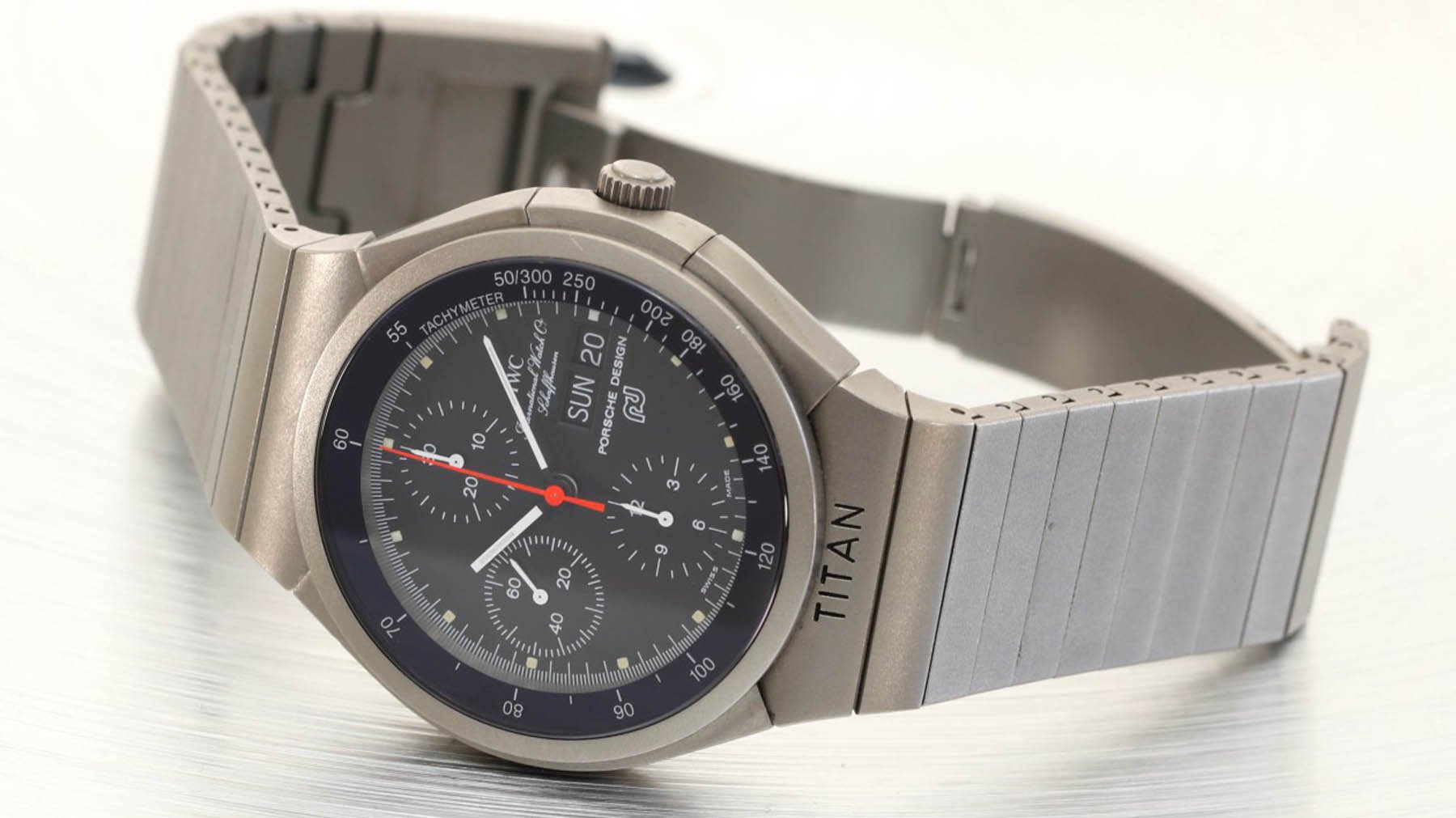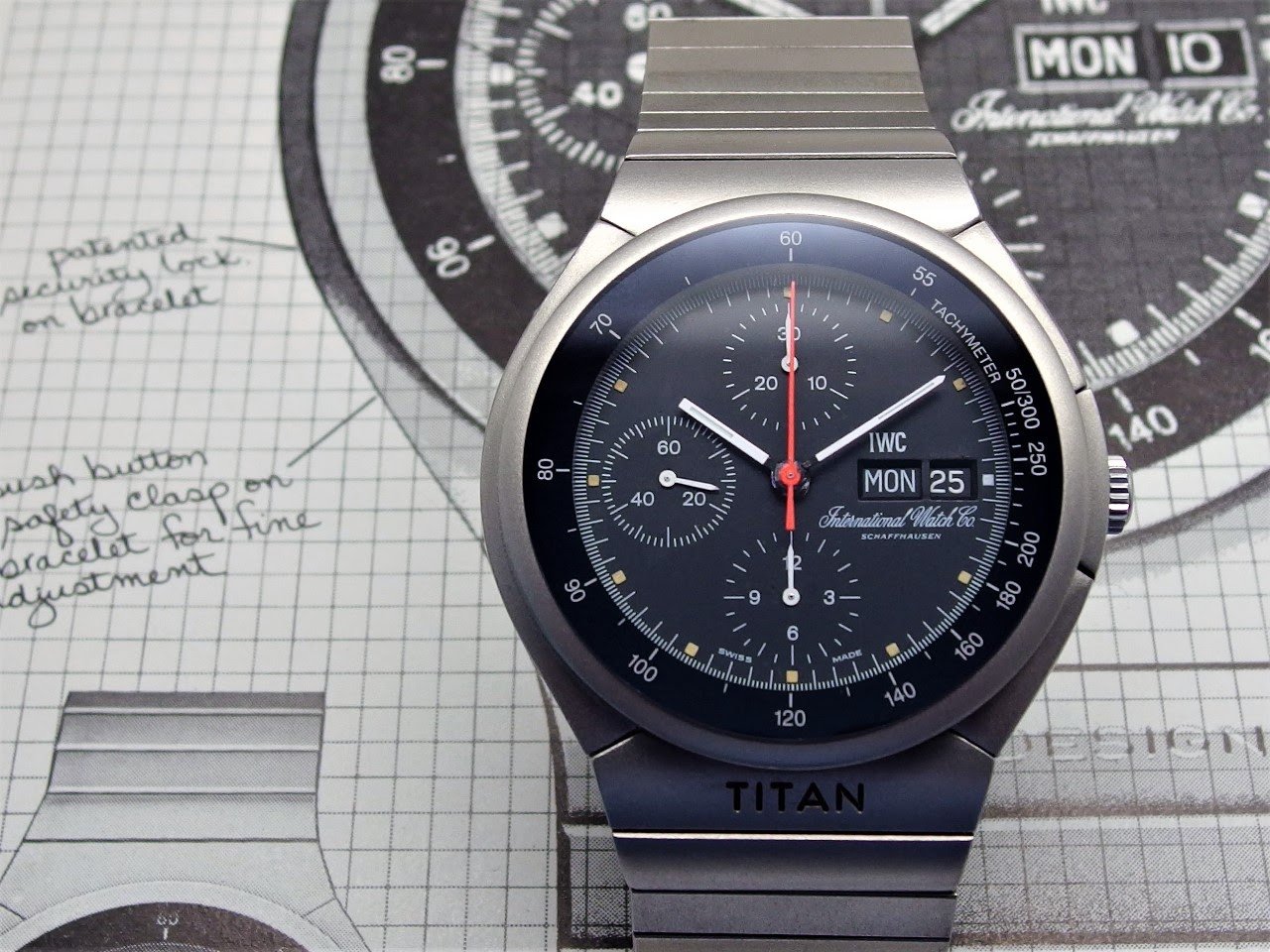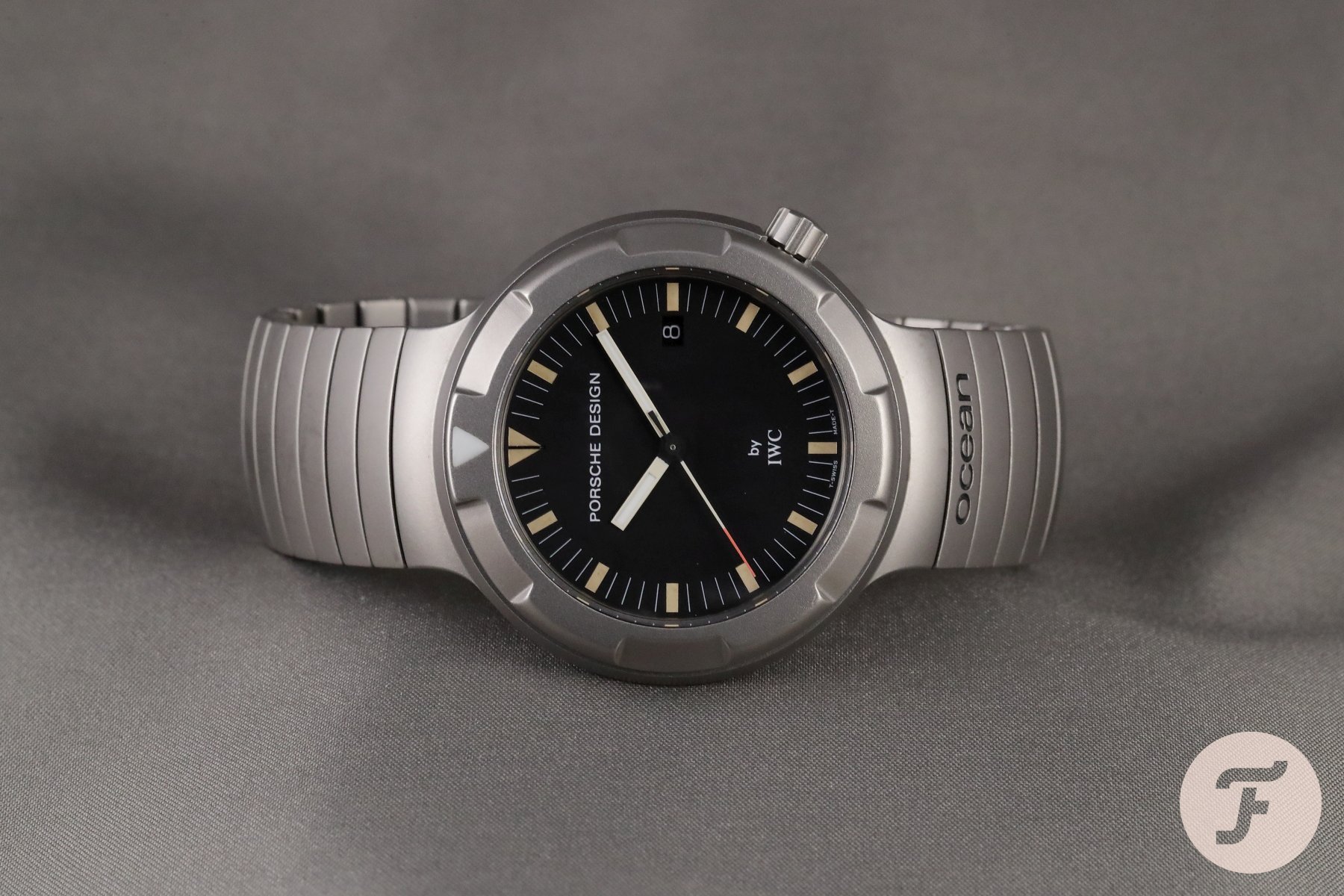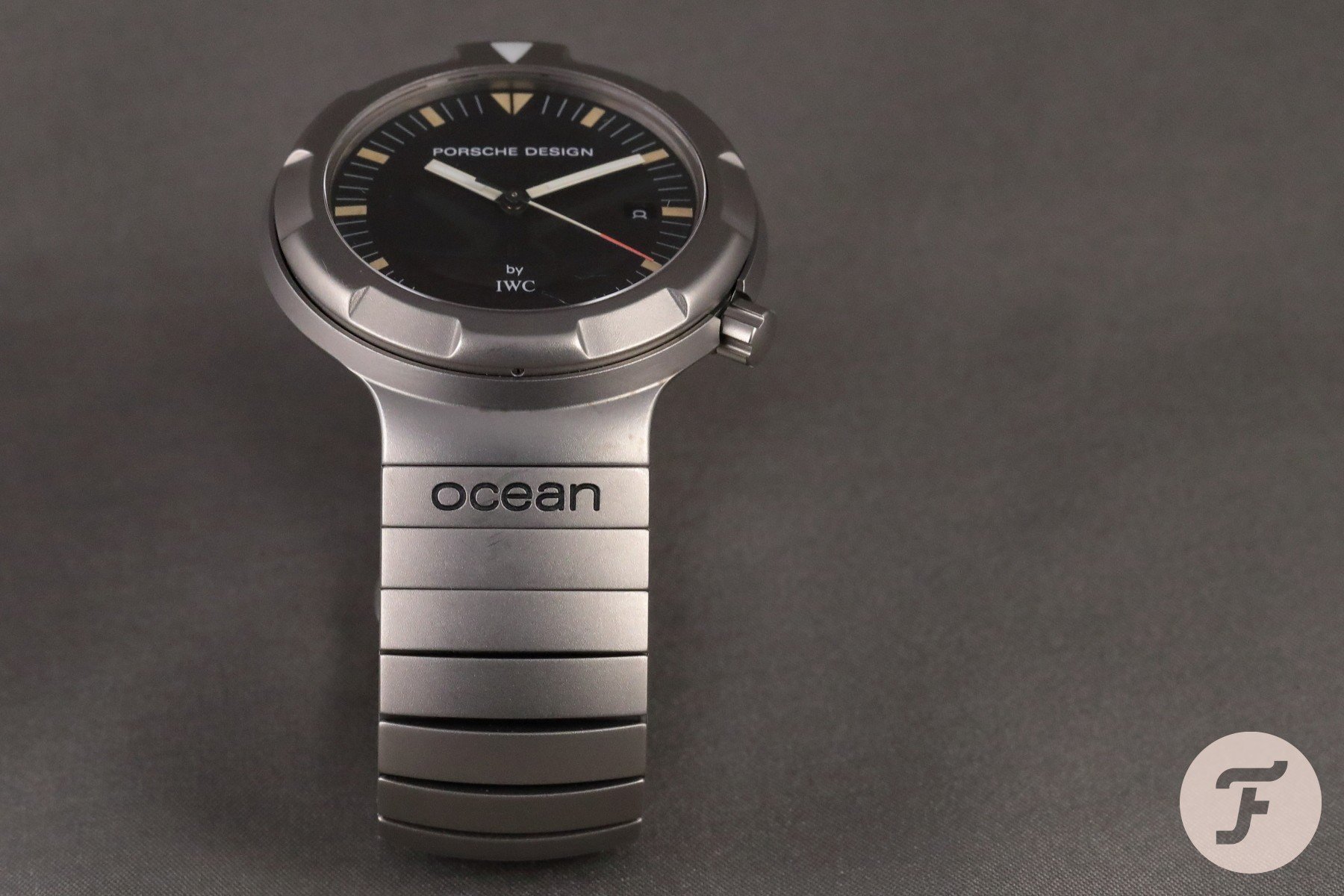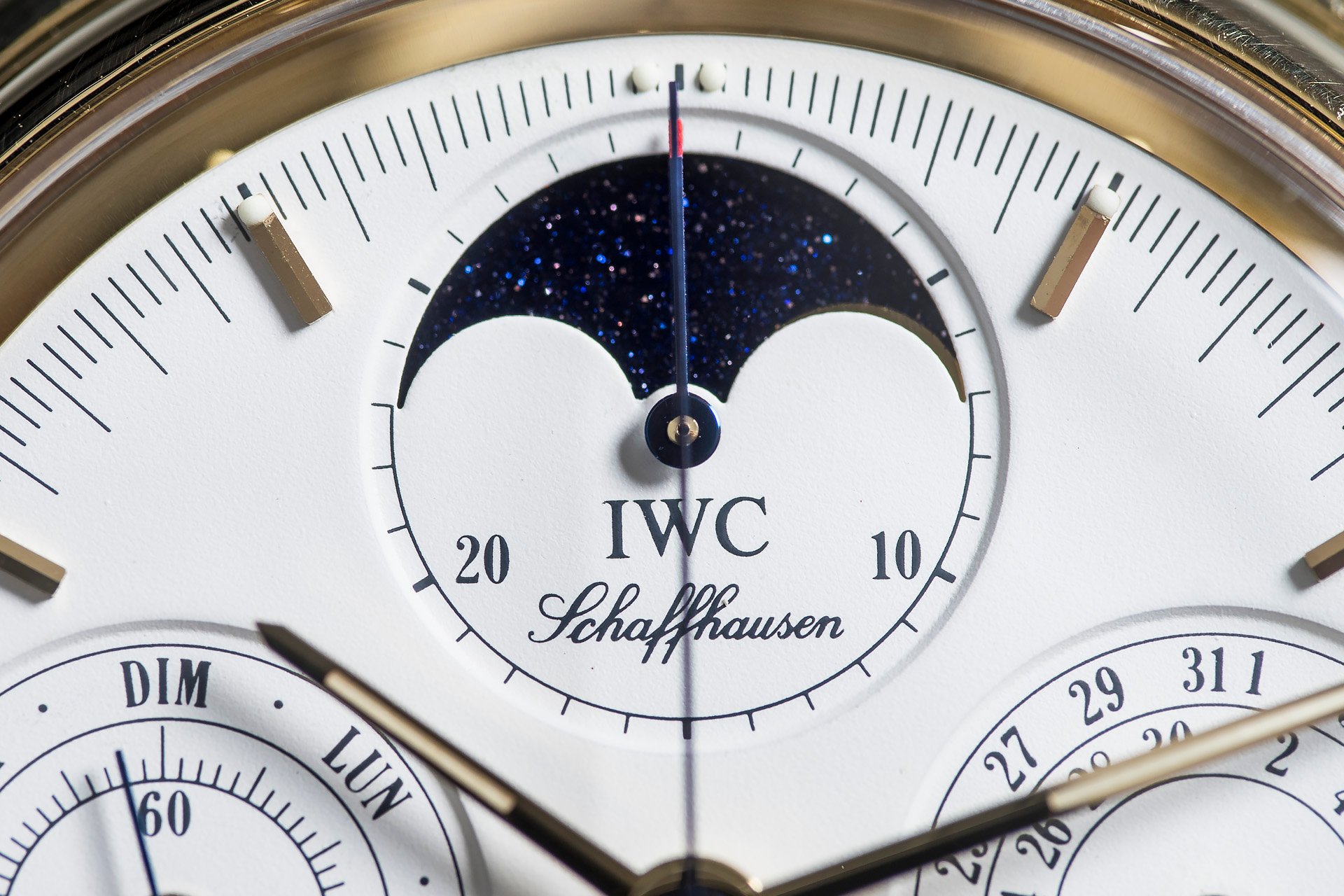Buying Guide: The Best IWC Watches From The 1980s
We like to talk about vintage watches a lot within the Fratello team. Though most of what we write about is largely focused on the most recent releases and developments, for many of us, a lot of the fun can be found in the sometimes weird and often wonderful world of vintage watches. It’s a world full of history, remarkable watches, incredible stories, and quirky details. It inspired us to come up with a series of articles focusing on the best watches per decade from a select group of brands. Some of them are priceless, some of them still affordable. In this installment, we will take a look at the best IWC watches from the 1980s.
While the 1970s were a decade filled with tremendous change in the watch industry, the 1980s showed the fruits of that change. When Seiko started the quartz revolution, most Swiss brands never predicted the enormous long-term effects on the industry. This is also why a lot of Swiss brands ended up in trouble, often with disastrous results. In the 1980s, quartz was king, which is reflected in some of this week’s picks.
When it comes to style and design, the eighties were a special time. Often perceived as a decade with a distinct lack of style, or rather an abundance of tacky style and designs, the 80s were often frowned upon. But, over time, and with the benefit of hindsight, we have seen an increasing appreciation for some of the more unique watches from this era. So as you might imagine, there are plenty of good things to discover if you are looking for a vintage piece from the 1980s.
IWC in the 1980s
IWC is another one of those brands that were hit hard by the quartz crisis. As a result, the brand, with Otto Heller at the helm, came up with many different plans to turn the tide in the 1970s. In 1976 we saw the introduction of the Genta’s iconic Ingenieur. The brand also created a series of high-end pocket watches. Additionally, IWC started a partnership with Ferdinand A. Porsche — with results that you will find in this article. Lastly, the brand started experimenting with new materials resulting in the first watch with a titanium case and bracelet.
IWC made sure to keep finding new ways of pushing the technological development for their watches. Behind the scenes, the company changed ownership as well in the late 1970s. In 1978 VDO Adolf Schindling AG took a majority stake in IWC. But the great thing is that the focus on creating great mechanical wristwatches never changed. With Günter Blümlein at the helm, IWC became one of the brands where a lot of exciting developments took place in the 1980s. The partnership with Porsche Design pushed the envelope of design. With the new Da Vinci line, the brand introduced a classical line of watches that introduced some amazing new technical developments. Lastly, the brand kept trying to find new materials to use for all of its product lines, including titanium and ceramic. So it seems only logical that we can easily pick five great IWC timepieces from the 1980s.
The entry-point — IWC Yacht Club II ref. 3312
Doing this series of articles is a great way to find out about some of the forgotten models of the past. And sometimes you even find new models you never knew existed. That’s exactly the case with this IWC Yacht Club II ref. 3312. The Yacht Club name is obviously still part of the IWC collection nowadays albeit under the Portugieser umbrella. In the past, the Yacht Club was a full-on lineup within the IWC collection. One of the hidden gems for me from the past is this IWC Yacht Club II ref. 3312. There is a bit of a story to this watch too. In 1976 IWC introduced the iconic Genta-designed Ingenieur that we’ll get to a little further down the list. Riding the same wave of the IWC Ingenieur SL “Jumbo” ref. 1832 was the IWC Yacht-Club II ref. 3212.
The Yacht Club collection was introduced in 1967 as the sporty alternative for the Ingenieur collection. But with the introduction of the Genta Ingenieur, IWC created another luxury sports watch. IWC recognized that as well and developed the Yacht Club II that was released not long after the Ingenieur in the late 1970s. What IWC did perfectly was creating two different designs that are not similar. But we can’t deny that the Yacht Club II does look a bit like another Genta design. I am not mad at it though. The 38mm octagonal case of the Yacht Club II is different. It has a bit more mass because the shape is a bit more pronounced than just an octagonal bezel. Add the Jaeger Le-Coultre Caliber 9000 and the integrated bracelet and IWC created a very compelling offering.
Creating great relevance
Now there was a quartz version of the watch as well. But the reference 3012 was only produced in 1977/78 before being discontinued. Only a few years later, quartz was truly ruling the industry. It’s when IWC decided to add the second quartz version of the Yacht Club II. The result was a slimmer version of the watch with a slightly redesigned dial. What stands out most is that the hour markers on the quartz version are thinner. IWC released the quartz version in four sizes and in steel, bi-color, full gold, and full gold with diamonds. We’ll focus on the 38mm version in steel that was available with the choice of a black or silver dial. Overall I like the automatic version a bit better. The slightly thicker hour markers give it a bit more contemporary power.
Inside the case, IWC chose to use the IWC quartz Caliber 2250. Essentially it is a renamed ETA 955.112 quartz movement. The movement features hours, minutes, central seconds, and has a date display at 3 o’clock. It is a very commonly used quartz movement that was also used by brands like, for example, TAG Heuer. The good thing about it is that nowadays it is still easy to repair or replace as these movements are still offered for sale. IWC produced the Yacht Club II ref. 3312 until 1984 before it was discontinued. Finding an IWC Yacht Club II is definitely possible and the quartz version is relatively affordable. Expect to pay roughly between 2,5K – 3,5K depending on the condition. For that money, you will actually buy a great-looking watch.
My pick — IWC Ingenieur SL Quartz ref. 3303
My pick had to be Gerald Genta’s IWC Ingenieur. Of course, it had to be, as I love all three of Genta’s creations. But somehow, I have grown to love the IWC Ingenieur even more because it is somewhat of the underdog out of the trio of watches. Genta’s original IWC Ingenieur SL “Jumbo” ref. 1832 was introduced in 1976, and IWC only produced a little over 500 pieces of this classic. But in 1980, IWC also introduced the quartz version of this watch, the IWC Ingenieur SL Quartz ref. 3303. This quartz version is not just the same watch with a different movement. IWC actually changed the design slightly, and to my surprise, I actually like this over the reference 1832.
The watch features the same 40mm case but the quartz movement allows for a much thinner case. The automatic version has a 12.5mm thick case, and this quartz version features an 8.7mm thick case. To ensure the bracelet was in the right proportion, IWC also made the bracelet thinner and a little more elegant. Additionally, the bezel was redesigned, becoming slightly thicker. What remained was the beautiful checkerboard guilloché dial said to remember graph paper. The watch came with the choice of a black or a silver dial, and I must say it looks incredible.
A tough find
Inside the case, IWC used their IWC Caliber 2250 once again, essentially a renamed ETA 955.112 quartz movement. The movement features hours, minutes, and central seconds and has a date display at 3 o’clock. The date display of the quartz version features a stainless steel frame which its automatic brother doesn’t, and therefore it integrates better with the black dial. Another great detail is the iconic fish logo used on the crown, indicating a water-resistant watch. The steel ref. 3303 was water-resistant up to 12 atm. IWC also produced a glorious 18 karat yellow gold model with ref. 9701 that was technically the same except for the water resistance of 6 atm.
Between 1980 and 1985, IWC produced only 369 pieces of the IWC Ingenieur SL Quartz. Of those 369 pieces, 149 were produced in steel. An additional 160 were produced in steel and gold, 56 were produced in yellow gold with the just mentioned ref. 9701, and finally 4 pieces with diamonds were produced with ref. 9720. It goes to show you how rare the steel version is. In comparison, IWC produced 543 pieces of the automatic version of the Ingenieur SL “Jumbo.” But the difference in price on top of the better-proportioned design might be a reason to search for the IWC Ingenieur SL Quartz ref. 3303. They do not show up often for sale but expect to pay between €7.5K–€10K for one. Compared to the automatic version, that is a lot cheaper.
Money is no object #1 — IWC Da Vinci Perpetual Calendar ref. 3750
This IWC Da Vinci Perpetual Calendar ref. 3750 has become an industry icon. It has become one of the most recognizable watches representing the resurgence of mechanical watches in the 1980s. The story of the Da Vinci Perpetual Calendar is a remarkable one. The watch is the brainchild of the legendary IWC watchmaker Kurt Klaus. Klaus joined IWC in 1957 and grew into the position of head watchmaker at IWC. While Klaus worked on calendar complications for high-end pocket watches, IWC boss Günter Blumlein asked him to develop wristwatches. Klaus took on the task of creating the most user-friendly wristwatch calendar ever designed.
The technical solution that Klaus came up with was brilliant. The central idea behind the watch was to link the calendar to the midnight change-over mechanics of the 24-hour wheel of the movement. This way, all the displays could operate in sync and move forward simultaneously, just like the date display. Klaus made that idea a reality, and he created a module where all the displays were synchronized so that you can advance them daily by simply using the crown. The best thing about it was that this in-house perpetual calendar module could be affixed on top of any basic movement. The new Da Vinci IWC decided to use it on top of a heavily modified Valjoux 7750 and name the new movement IWC Caliber 79261.
The Da Vinci name
IWC had to develop a name for the new mechanical masterpiece and decided to go with “Da Vinci”. It wasn’t necessarily a new name as the brand had launched a high-end quartz watch in 1969 called the IWC Da Vinci. It’s truly a stroke of brilliance as the choice for the name can be interpreted multiple ways. First off, the Da Vinci ref. 3750 was IWC’s first big technological introduction after the 1969 Da Vinci, therefore claiming the name for the brand’s biggest inventions. Some people also say it’s a well-chosen name because it is the brand’s answer to the quartz era. IWC chose the name to start the quartz era and used it once again to close that chapter.
There is a third factor that links to Leonardo Da Vinci, which is the watch’s design. The designer of the watch, Hano Burtscher, was inspired by sketches of Leonardo Da Vinci’s Codex Atlanticus. The sketches detailed harbor fortifications of the town of Piombino that featured concentric rings and four semicircular bastions. They served as the perfect inspiration to develop the 39mm round case with its four sub-dials and year indication while guaranteeing perfect readability. The watch was introduced with a yellow gold case and brown leather strap in 1985 and has since grown into an industry icon. Currently, the ref. 3750 on a leather strap goes for roughly €8K–€12K, and on a full gold bracelet up to €15K. One year later IWC also introduced the iconic black and white ceramic versions of the Da Vinci, which were the world’s first ceramic watches. It showed the unique status of the Da Vinci line.
Money is no object #2 — IWC Porsche Design Titan Chronograph ref. 3700
I did not expect the IWC Porsche Design Titan Chronograph ref. 3700 to be affordable, to be honest. As it is the world’s first full titanium watch, you would think it cost a pretty penny. But as it turns out, its a completely different story, as we will find out later. But let’s start at the beginning. IWC was not the first brand to use a titanium case for a watch. That honor goes to Citizen, who introduced the X-8 Chronometer with a titanium case in 1970. It took another full decade before Ferdinand A. Porsche set his mind to creating the first full titanium watch in partnership with IWC. The partnership between Porsche Design and IWC started in 1977 after Porsche had said goodbye to Orfina as their partner for watches.
The first result of the partnership came in the form of the famous Porsche Design by IWC ref. 3150 compass watch. It’s a strange watch made off anodized aluminum that features a case made of two parts. The upper part features a watch module, and by flipping up the upper part of the case, the compass in the lower part exposes itself. The second ambitious project that Ferdinand A. Porsche came up with was to create a full titanium watch. After many prototypes, the first IWC Porsche Design Titan Chronograph ref. 3700 was released in 1980. Over time IWC also used ref. 3702 and ref. 3704 for the same watch that was in production until 1996–1997 when the partnership ended.
Creating great relevance
The watch was introduced in 36mm and 42mm, with the latter being the most interesting for most people nowadays considering its bigger size. So let’s go with that one. The watch features a unique 42mm titanium case with fully integrated pushers to operate the chronograph. As a result, the case does not look like a typical chronograph, and the case lines flow seamlessly into the integrated bracelet. As you can see, Porsche Design and IWC were proud of the use of titanium, engraving “TITAN” on the case. A detail that would be removed for the later generation ref. 3704 from the 1990s that Tomas wrote about.
The watch is also a great exercise in co-branding. The prototypes (see pictured) and first commercially released models released didn’t actually have Porsche Design on the dial. Later models feature various options, from IWC International Watch Company Schaffhausen above the date window and Porsche Design with the “PD” logo underneath to “Porsche Design by IWC” in the 1990s. Inside the case, you will find the IWC Caliber 790, essentially a renamed version of the trusted automatic Valjoux 7750 chronograph movement. IWC also introduced a new bracelet for the watch with the introduction of the ref. 3702 in 1987. So if you are in the market for one of these iconic titanium chronographs, you should definitely do your homework. If you do, this amazing timepiece can be yours between €2K–€4K. That is a stunningly affordable price.
Money is no object #3 — IWC Porsche Design Ocean 2000 ref. 3500
Next up is another one of IWC’s biggest icons ever created. The IWC Porsche Design Titan Chronograph ref. 3700 that I discussed earlier was a great commercial success in the early ’80s. The story goes that at one point, it sold more units than all other Swiss brand chronographs combined. Its great commercial success is what saved the IWC brand. For the next collaboration between Porsche Design and IWC, Ferdinand A. Porsche designed the Ocean 2000 ref. 3500. According to the brand, it was first introduced at Baselworld in 1983, but Porsche Design already announced the watch in a press release in 1981. That specific version of the watch was only sold through Porsche Design’s own stores, only featured the Porsche Design logo on the black dial, and is very rare.
Just like with the Titan Chronograph ref. 3700 there were multiple dial executions that play with the logos and hierarchy. But let’s start at the beginning. That same press release I mentioned stated that Porsche initially designed the Ocean 2000 for the West-German navy. They are the famous Ocean 2000 BUND timepieces that are very popular amongst collectors. The civilian version of the watch is the Ocean 2000 that was produced from 1982 until 1998. During its production run, not a whole lot changed when it comes to its design. Most notably are the changes in dial/logo execution, as mentioned. IWC also produced four different versions of the bracelet, as Andreas explained in his in-depth article about the Ocean 2000. When the Ocean 2000 was introduced, it showed how Porsche managed to create an iconic dive watch where form follows function.
Form follows function
The first version released was the IWC Porsche Design Ocean 2000 ref. 3500. Later versions — like Andreas’ one pictured — from the 1990s have the reference number 3524 and are also the references that have the text “Porsche Design by IWC” on the dial. But in essence, the watch’ design stayed pretty much unchanged for sixteen years. This is understandable because Porsche managed to design a watch that delivers on the bare essentials of a dive watch and, in the process, gives it a ton of character. The watch features a 42.5mm titanium case that is 10.5mm thick and which came on a titanium bracelet. The size combined with the lightweight materials makes this Ocean 2000 an absolute joy to wear.
The watch is water-resistant to a whopping 2000 meters and features the characteristic bi-directional diving bezel that plays a big part in the watch’s character. But before you can turn the bezel counter-clockwise, you first have to press it down. It’s a safety mechanism to make sure you don’t accidentally turn the bezel during a dive. Another distinct detail is the placement of the crown at 4 o’clock. With such a minimalist design, it’s these details that give the watch its character. Inside the titanium case, IWC equipped the watch with the IWC Caliber 3752-1, a modified version of the ETA 2892 that features a date window at 3 o’clock. The execution of that window is exemplary for the Ocean 2000. The overall design, shapes, and characteristic lines define this watch and make it a classic. A classic that costs roughly between €5K–€8K and closes out our list.
Final Thoughts
As always, I can only cover a few of the great number of classics that IWC produced in this decade. When it comes to IWC, there is an incredibly rich world of different models and references to discover. If you begin heading down the vintage IWC rabbit hole, don’t be surprised to find a great variety of subtle and not-so-subtle differences between the different generations of one model. Especially the number of dial executions is sometimes overwhelming. Next, you have to remember that many vintage pieces were serviced over the decades, and parts have been replaced. And lastly, you have to be aware of many fake and Franken pieces out there.
If you want to find out more about IWC, there are plenty of books and websites that can help you get an idea of the brand’s rich history. One of the books is IWC Schaffhausen: Engineering Time Since 1868 by Manfred Fritz, Paulo Coelho and Enki Bilal. Additionally, the brand also has its own IWC collector’s forum that you can subscribe to. Finally, there is the active community at WatchUSeek that also has its own dedicated IWC brand forum.
Next week, we will look at some of the best watches from Zenith from the 1980s. In the meantime, make sure to let us know what your favorite IWC watches from the 1980s are in the comments section below!

